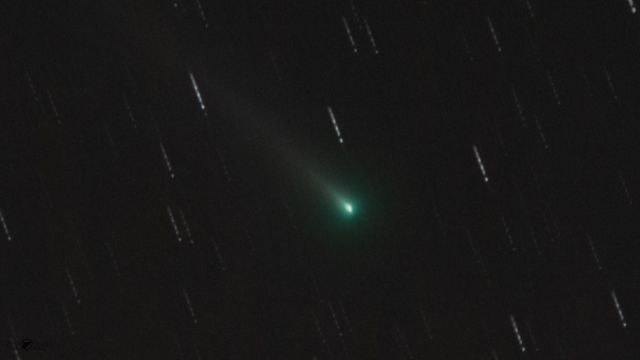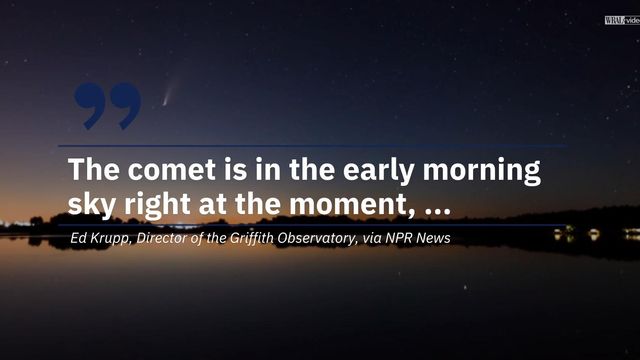A newly-discovered comet will sweep past Earth this week. Here's how to see it
Long period comet Comet C/2021 A1 (Leonard) is visible in the pre dawn skies. Find where and when to catch a glimpse of this icy visitor, and tips for seeing it.
Posted — UpdatedThis week will be the only chance to ever observe Comet Leonard — one of the brightest comets to pass by the planet Earth.
Recent observations have shown a short, but dense, dust tail should make spotting it a little easier. Binoculars and a dark site will help you see it. By mid-to-late this week, you might be able to make it out with the naked eye under particularly dark skies. The best time to see it will be in the early morning hours, around 5 a.m. You'll have around 90 minutes to catch it.
Picking the best day to catch a glimpse of this icy visitor is a balancing act.
When to look
By Friday or Saturday (Dec. 10-11), it will be too close to the sun to be able to see.
The comet currently has an estimated brightness (apparent magnitude) of around 6. Lower numbers are brighter and each jump represents a lot more brightness on this logarithmic scale. This is expected to decrease to under 4.3 by next weekend, or about 5 times brighter.
The best time to look will be mid-to-late this week. As the comet draws closer to the horizon, even through the comet is expect to continue brightening, you are looking through much more atmosphere, so it will actually appear dimmer.
How to see the comet
- A telescope will help, but so will a good pair of binoculars.
- Dark skies provide the best views, especially those north and east of cities
- Try an astronomer's trick and one that has been used for generations of sailors: averted vision. Look just to the side of where the comet is to take advantage of more sensitive parts of your eye that aren't right in the center.
- As the comet draws closer to the horizon, a site with a clear eastern horizon will make the comet easier to see. The western side of a field or lake work well.
- Give your eyes time to adjust. You'll be amazed how much more you can see after just 20 to 30 minutes.
- A red filter on a flashlight will protect your night vision. Try slipping a red balloon over the flashlight,
By Dec. 13, the comet will be lost in the sun's glow. About a week later, if it survives perihelion, the comet should be visible in the evening sky through the end of the year.
The same energy from the sun that creates a brilliant tail can cause a comet to break apart, something that could happen tomorrow, next week or not at all.
As astronomer David H. Levy says, “Comets are like cats: they have tails, and they do precisely what they want.”
• Credits
Copyright 2024 by Capitol Broadcasting Company. All rights reserved. This material may not be published, broadcast, rewritten or redistributed.






